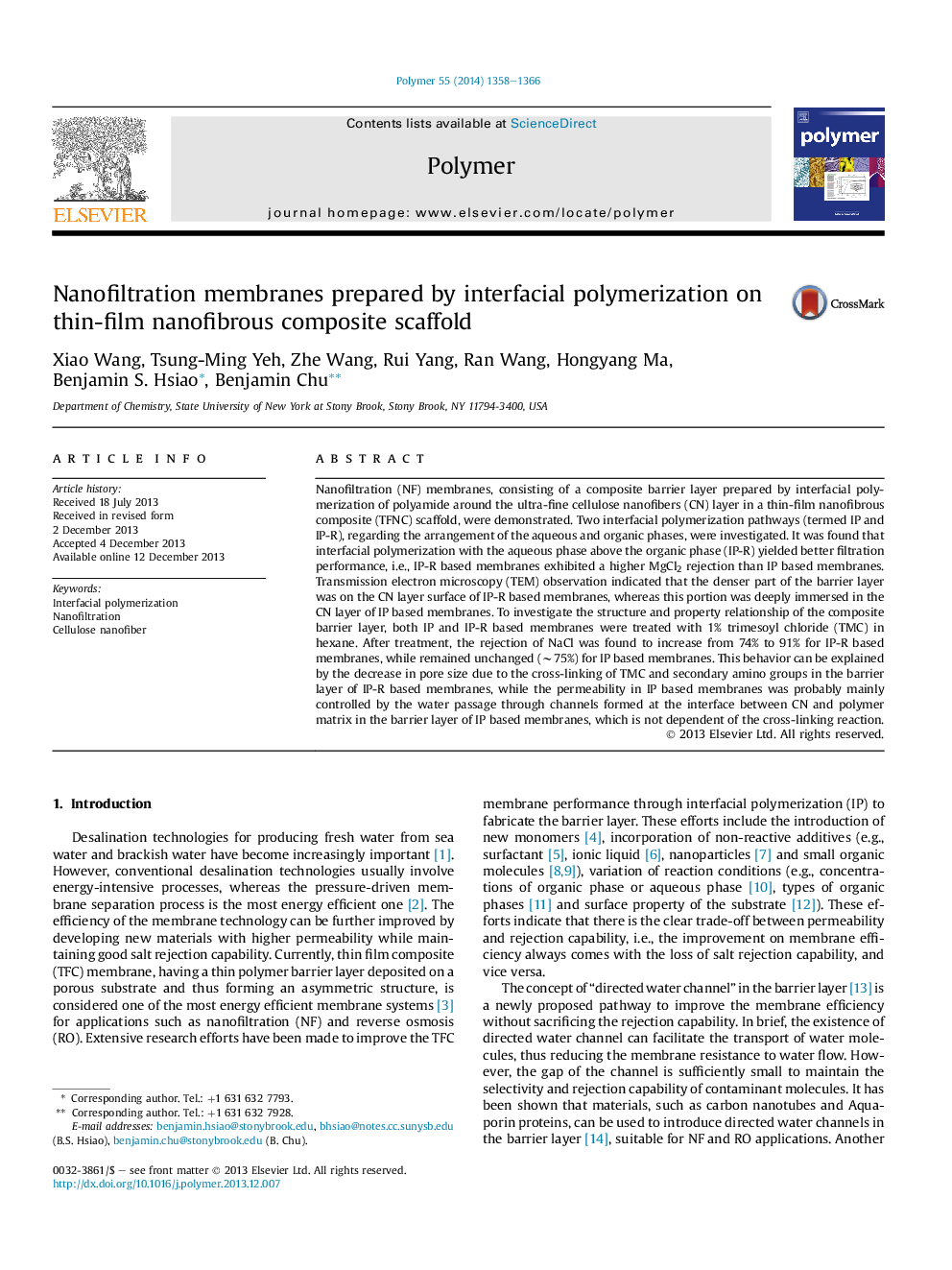| Article ID | Journal | Published Year | Pages | File Type |
|---|---|---|---|---|
| 5181590 | Polymer | 2014 | 9 Pages |
Nanofiltration (NF) membranes, consisting of a composite barrier layer prepared by interfacial polymerization of polyamide around the ultra-fine cellulose nanofibers (CN) layer in a thin-film nanofibrous composite (TFNC) scaffold, were demonstrated. Two interfacial polymerization pathways (termed IP and IP-R), regarding the arrangement of the aqueous and organic phases, were investigated. It was found that interfacial polymerization with the aqueous phase above the organic phase (IP-R) yielded better filtration performance, i.e., IP-R based membranes exhibited a higher MgCl2 rejection than IP based membranes. Transmission electron microscopy (TEM) observation indicated that the denser part of the barrier layer was on the CN layer surface of IP-R based membranes, whereas this portion was deeply immersed in the CN layer of IP based membranes. To investigate the structure and property relationship of the composite barrier layer, both IP and IP-R based membranes were treated with 1% trimesoyl chloride (TMC) in hexane. After treatment, the rejection of NaCl was found to increase from 74% to 91% for IP-R based membranes, while remained unchanged (â¼75%) for IP based membranes. This behavior can be explained by the decrease in pore size due to the cross-linking of TMC and secondary amino groups in the barrier layer of IP-R based membranes, while the permeability in IP based membranes was probably mainly controlled by the water passage through channels formed at the interface between CN and polymer matrix in the barrier layer of IP based membranes, which is not dependent of the cross-linking reaction.
Graphical abstractDownload full-size image
